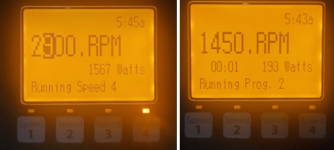I've been running my generic Calimar SWCG at 100% for 3 years now -- not continuously of course! I control the generation time with a cheap WiFi plug, so I can easily adjust since I test inside, a good distance from the pool, and don't want to go out to touch the dial. As mentioned, the SWCG doesn't care if it's run for 100% for 6 hours, 50% for 12 hours, 25% for 24 hours; there shouldn't be any real difference in wear/lifetime.
In addition, if you're using a timer 100% avoids an issue with some units with what seem like ridiculously long cycle times like 180 minutes (so setting the unit to 50% and then using a timer for 4 hours might actually result in 3 hours on, 1 off, or 75%). But otherwise it's all up to whatever fits best into
I echo the questions about FC usage and generation. If you're data oriented, you could do 3 experiments:
1) Overnight chlorine loss (SWCG off), tells you if anything besides the sun is using FC.
2) Overnight chlorine gain (SWCG on 100%), tells you what the actual generation rate is. Some brands/models have been reported to be way less than advertised.
3) Daytime chlorine loss (SWCG off), to match up to how many hours to run.
3a) If you have a solar cover and leave it on some days like I do, a second daytime chlorine loss with cover on (SWCG off) can help adjust as needed.



